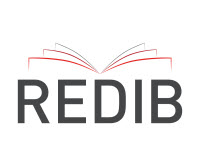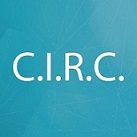O que cortar com a navalha: economia na Gramática Gerativa e na Sintaxe mais Simples
DOI:
https://doi.org/10.21680/1517-7874.2018v20n1ID13618Palavras-chave:
Modelos formais de gramática, Gramática Gerativa, Sintaxe mais Simples, Princípio da Parcimônia.Resumo
Este estudo propõe uma discussão teórica que compara alguns estágios da Gramática Gerativa Tradicional (CHOMSKY, 1965, 1981, 1995) à proposta da Sintaxe mais Simples (CULICOVER; JACKENDOFF, 2005) no que diz respeito às noções de economia e parcimônia para a construção e o desenvolvimento de uma teoria naturalista da linguagem. A GGT, tradicionalmente, objetiva a simplificação das regras de formação – minimizando os princípios que compõem a gramática – o que leva à postulação de estruturas sintáticas mais detalhadas. A Sintaxe mais Simples aplica a Navalha de Ockham na própria estrutura sintática; consequentemente, a teoria precisa refinar as regras de formação e projetar a sintaxe em uma estrutura flat. Isso se torna possível por meio de uma arquitetura em paralelo, em que fonologia, sintaxe e semântica dividem a complexidade estrutural, assegurando uma maior autonomia da sintaxe.
Downloads
Referências
BERWICK, R. C.; CHOMSKY, N. Why only us: language and evolution. Cambridge: MIT Press, 2016.
CHOMSKY, N. Aspects of the theory of syntax. Cambridge: MIT Press, 1965.
______. Lectures on Government and Binding. Dordrecht: Foris, 1981.
______. O conhecimento da língua: sua natureza, origem e uso. Lisboa: Caminho, 1994 [1986].
______. Reflections on Language. New York: Pantheon, 1975.
______. Studies on Semantics in Generative Grammar. The Hague: Mouton, 1972.
______. Syntactic Structures. The Hague: Mouton, 1957.
______. The minimalist program. Cambridge: MIT Press, 2015 [1995].
______. What kind of creatures are we? New York: Columbia University Press, 2015.
CHOMSKY, N.; BELLETTI, A.; RIZZI, L. An interview on minimalism. In.: CHOMSKY, N. On nature and language. New York: Cambridge University Press, 2002. p. 92-161.
CHOMSKY, N.; LASNIK, H. The theory of principles and parameters. In.: CHOMSKY, N. The minimalist program. Cambridge: MIT Press, 2015 [1995].
CINQUE, G.; RIZZI, L. The Cartography Syntactic of Structures. STiL – Studies in Linguistics, CISCL Working Papers, v. 2, p. 42-58, 2008.
CULICOVER, P. W. Grammar and complexity: Language at the intersection of competence and performance. Oxford: Oxford University Press, 2013.
______. Principles and Parameters: An introduction to syntactic theory. New York: Oxford University Press, 1997.
CULICOVER, P. W.; JACKENDOFF, R. Simpler Syntax. New York: Oxford University Press, 2005.
CULICOVER, P. W.; NOWAK, A. Dynamical Grammar: Minimalism, Acquisition and Change. Oxford: Oxford University Press, 2003.
FRIEDERICI, A. D. Towards a neural basis of auditory sentence processing. Trends in Cognitive Science, v. 6, n. 2, 78-84, 2002.
HAACK, S. Lewis’ Ontological Slum. The Review of Metaphysics, v. 30, n. 3, 415-429, 1977.
HAGOORT, P. MUC (Memory, Unification, Control) and beyond. Frontiers in Psychology, v. 4, 1-13, 2013.
HORNSTEIN, N. A Theory of Syntax: Minimal Operations and Universal Grammar. New York: Cambridge University Press, 2009.
JACKENDOFF, R. A whole lot of challenges for linguistics. Journal of English Linguistics, v. 35, n. 3, p. 253-262, 2007.
______. Foundations of language: Brain, meaning, grammar, evolution. New York: Oxford University Press, 2002.
______. Languages of the mind: Essays on mental representation. Cambridge: MIT Press, 1992.
______. Semantics and cognition. Cambridge: MIT Press, 1983.
______. What is the human language faculty? Two Views. Language 87, p. 586-624, 2011.
JACOB, F. Evolution and Tinkering. Science. v. 196, n. 4295, p. 1161-1166, 1977.
KATZ, J. J.; POSTAL, P. M. An integrated theory of linguistic descriptions. Cambridge: MIT Press, 1964.
LAKOFF, G. On Generative Semantics. In.: STEINBERG, D. D.; JAKOBOVITZ, L. A. (Orgs.). Semantics: An interdisciplinary reader in philosophy, linguistics and psychology. London: Cambridge University Press, 1974.
LEWIS, D. On the Plurality of Worlds. Oxford: Brasil Blackwell, 1986.
______. Possible Worlds. In.: LOUX, M. J. (Org.). The possible and the actual: readings in the metaphysics of modality. Ithaca: Cornell University Press, 1979. p. 182-189.
MORTARI, C. A. Against Modal Realism. In.: DUTRA, L. H. A.; MORTARI, C .A. (Orgs.). Princípios: seu papel na filosofia e nas ciências. Florianópolis: Núcleo de Epistemologia e Lógica, Imprensa Universitária, 2000.
PANACCIO, C. William of Ockham. In.: STANFORD Encyclopedia of Philosophy. (Disponível em: https://plato.stanford.edu/entries/ockham/#4.1. Acesso em: 10 fev 2017).
RAPOSO, E. P. Da teoria de Princípios e Parâmetros ao Programa Minimalista: algumas ideias-chave. In.: CHOMSKY, N. O Programa Minimalista. Lisboa: Caminho, 1995. p. 15-37.
TALMY, L. Toward a Cognitive Semantics (vol) 1. Cambridge: MIT Press, 2003.
ULLMAN, M. T. The declarative/Procedural Model of Lexicon and Grammar. Journal of Psycholinguistics Resarch. v. 30, n. 1, p. 37-69, 2001.
Downloads
Publicado
Como Citar
Edição
Seção
Licença

Este trabalho foi licenciado com uma Licença Creative Commons - Atribuição - NãoComercial - CompartilhaIgual 3.0 Não Adaptada.

 Português (Brasil)
Português (Brasil) English
English Español (España)
Español (España)









.jpg)




